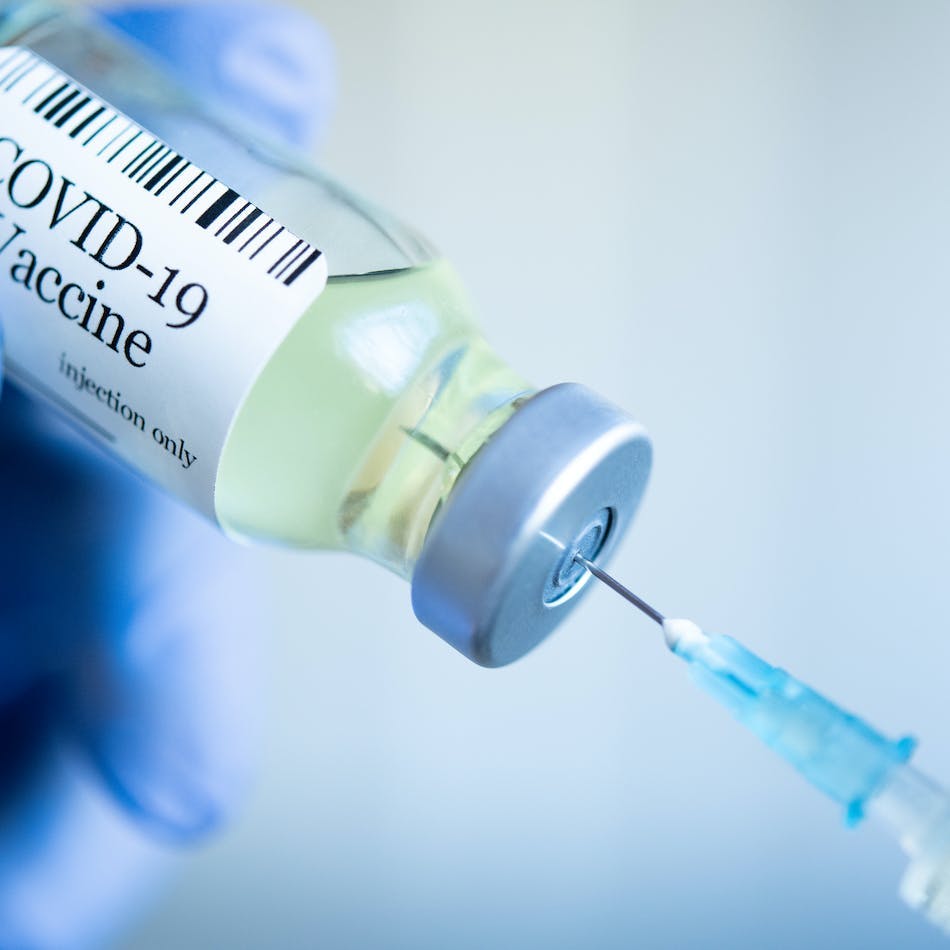COVID-19: Still Dangerous Despite Vaccines, Experts Advise Awareness and Vaccinations to Protect Employees
By Jane Paolucci | Published March 18, 2021

COVID-19 has prevented most employers from opening their workplaces for a year, but that is changing. The availability of several vaccines against the virus – although still in limited global supply – along with masking and social distancing precautions have begun to reduce the number of new cases reported each week.
But the pandemic is not over yet, and so-called “herd immunity” that will come from widespread vaccination could take months. So, employers who are considering reopening later this year should be aware of how the virus can spread – and how rapidly.
ABD recently held a webinar with two experts on the COVID-19 virus from our partner, Cigna. They made it clear that while the cases and deaths from the virus known as SARS-CoV-2 are decreasing compared to that observed during the fourth surge this winter, the virus remains extremely contagious.
In fact, it is has been so widespread and produced such a large number of unexpected deaths (500,000 as of the webinar date) that for the first time since the end of WWII, “the CDC recently reported that life expectancy in the United States dropped by one whole year as a result of the pressure of the pandemic,” said Ken Phenow, MD, MPH, a family medicine physician who serves as medical executive for Cigna. It was an unprecedented decrease in life expectancy that is likely to continue downward as data from the end of 2020 is analyzed a year from now.
Drop in Cases Doesn’t Diminish Risk
While the drop in overall cases is “very encouraging,” he said, that doesn’t mean the virus is less infectious. In fact, it’s three times as infectious as the flu – so a single infected person can potentially spread the virus to three others. That creates an “exponential situation of exposure” that can get out of control.
Another critical characteristic of this virus that makes it dangerous, Dr. Phenow noted, is asymptomatic transmission. In other words, an individual can be infected by the virus, have no symptoms and never know that they are infected and easily spread the virus to others around them if they are not practicing good public health measures or those around them are also not protecting themselves.
The virus can also be spread by pre-symptomatic individuals that have the infection and can transmit the virus even before displaying minimal symptoms.
The virus can spread in a number of ways. The two most common are through direct exposure to respiratory droplets – if an infected person talks or sneezes in close proximity (usually 6 feet or less) to someone else – and by walking through a “contrail” of dried droplets from an infected person that remain suspended in the air for some time after they pass. Those conditions are common in most workplaces, and preventing that transmission is why “it’s so important to wear masks, to protect yourself and others around you.” Dr. Phenow said.
Another reason masks are crucial is that it can take up to two weeks for a newly infected person to show symptoms of COVID-19, versus a couple of days for the flu. During that incubation period, the virus can be spread to others without anyone realizing it – so people coming to work who feel normal could carry the virus and infect colleagues.
Even though 80% of people who become infected will experience only mild symptoms or no symptoms at all, about 14% will develop serious symptoms that might require hospitalization, he noted – and 5% will wind up in ICUs with severe breathing problems, as well as impact on the lungs, heart, kidneys and liver, which can be fatal. While older people – age 65 and beyond – are the most likely to have serious symptoms, the COVID-19 has claimed the lives of many younger people as well. And individuals with multiple chronic conditions like diabetes, high blood pressure and heart problems along with obese individuals and those with compromised immune systems due to cancer or other autoimmune disease are also at higher risk for infection and serious complications.
Vaccines Effective but Encouragement to Get Them is Needed
The most potent weapon in the fight against the virus are the vaccines that have become available since late last year. More new vaccines are coming online, and manufacturers who are normally competitors are cooperating to increase production of the vaccines. So far, they are proving to be effective, said Ellen Ray, a Clinical Pharmacist for Cigna.
What concerns her most are the many myths about the vaccines that could dissuade people from getting a shot – especially the fact that they were developed so quickly, in just months rather than years. That has some people convinced that researchers cut corners along the way, something Ray doesn’t believe.
“If you think about the fact that there were billions of dollars from all different sources, given to these companies,” she said, “and they had probably more scientists working on this project than any other project, ever” and much of the ‘technology’ to develop the vaccines was already discovered and available, then meeting the short timeframe while following all the precautions “is pretty reasonable.”
While it may take many more months or even years to gather complete data about any long-term concerns of the vaccines, the side effects so far have been minimal and normal, she said.
The other important concern is that the two most widely used vaccines in the U.S. to date – from Pfizer and Moderna – require two doses given a few weeks apart, rather than the single shot most people get for the flu.
“You need to keep people going to get that second shot, because there’s people that don’t want the vaccine,” she said, when they find out the short-term reaction to the second shot is often worse than the first. “So, they need to keep people motivated and keep them going, and to make sure that that a full, full level of protection without stopping, and then getting the second dose six months later.”
Another concerning area that Dr. Phenow discussed is the emergence of several virus variants of concern (VOC). These VOCs are mutations of the virus that are poised to become more prominent in the US in the future and are concerning because research has shown that they are more infectious and in some cases more lethal. The most concerning of these is the so-called UK variant (B.1.117) that significantly impacted the UK over the winter and is now spreading through Europe and is expected to be the dominant strain of the virus in the US by April. “To avoid these variants from spreading and causing a fourth surge of cases and death in the US like that seen in the winter, experts are recommending getting vaccinated as soon as you are eligible and the best vaccine is the one available once you are eligible to receive it. It is a race between variants and vaccine,” Dr. Phenow commented. “The only way we will get back to some level of normalcy is to get everyone vaccinated and continue to practice good public health measures like masking, physical distancing and avoiding crowded indoor environments until we reach herd immunity.”
Two other consequences of the virus that Dr. Phenow believed were important for employers to understand were discussed as well. These included the behavioral health epidemic within the pandemic and “long COVID”. The pandemic has been marked by significant increases in the number of Americans (about 50% or more; particularly younger generations) suffering from high levels of stress due to uncertainty about their future and impact of the pandemic on their financial, social and personal lives that are now leading to behavioral health issues such as depression, anxiety and burnout.
Data on the other consequence, the so-called “long COVID” or long haulers syndrome, Dr. Phenow noted was being reported by researchers from around the world, where individuals who were diagnosed with varying severity of COVID illness from asymptomatic to ICU hospitalizations are now reporting multiple COVID symptoms long after they had cleared the virus and tested negative. Many of the “long haul” symptoms are different that those that the affected individual experienced with acute COVID and some of the symptoms are quite debilitating. These include most commonly, persistent severe fatigue, headaches, and “brain fog” (mild subjective cognitive impairment) among other symptoms that appear 4 or more weeks after the acute illness and can significantly impact previously healthy individuals. The NIH has a new name for this condition that may affect up to 30% or more of COVID survivors, some leading to disability; it is being called “Post COVID Sequelae of SARS Cov2” or (PASC). Over a billion dollars in NIH research funds has been made available to researchers to better understand the cause of PASC, and how to better diagnose and treat it in the future. In response to this concerning medical issue, multi-disciplinary post COVID clinics are springing up around the country to help individuals with PASC; he noted that two of these clinics are here in Northern California at UCSF and UC Davis.
To learn more, we invite you to listen to a recording of the webinar at ABD’s website, check out additional COVID-19 related insights, or to contact your ABD consultant.

Jane Paolucci
Senior Vice President
Jane Paolucci is Senior Vice President of Marketing at Newfront. An experienced storyteller, she enjoys using her creativity to develop and deliver strategy and value-added marketing communications that inspire customers and team members to take action and achieve measurable business results.

